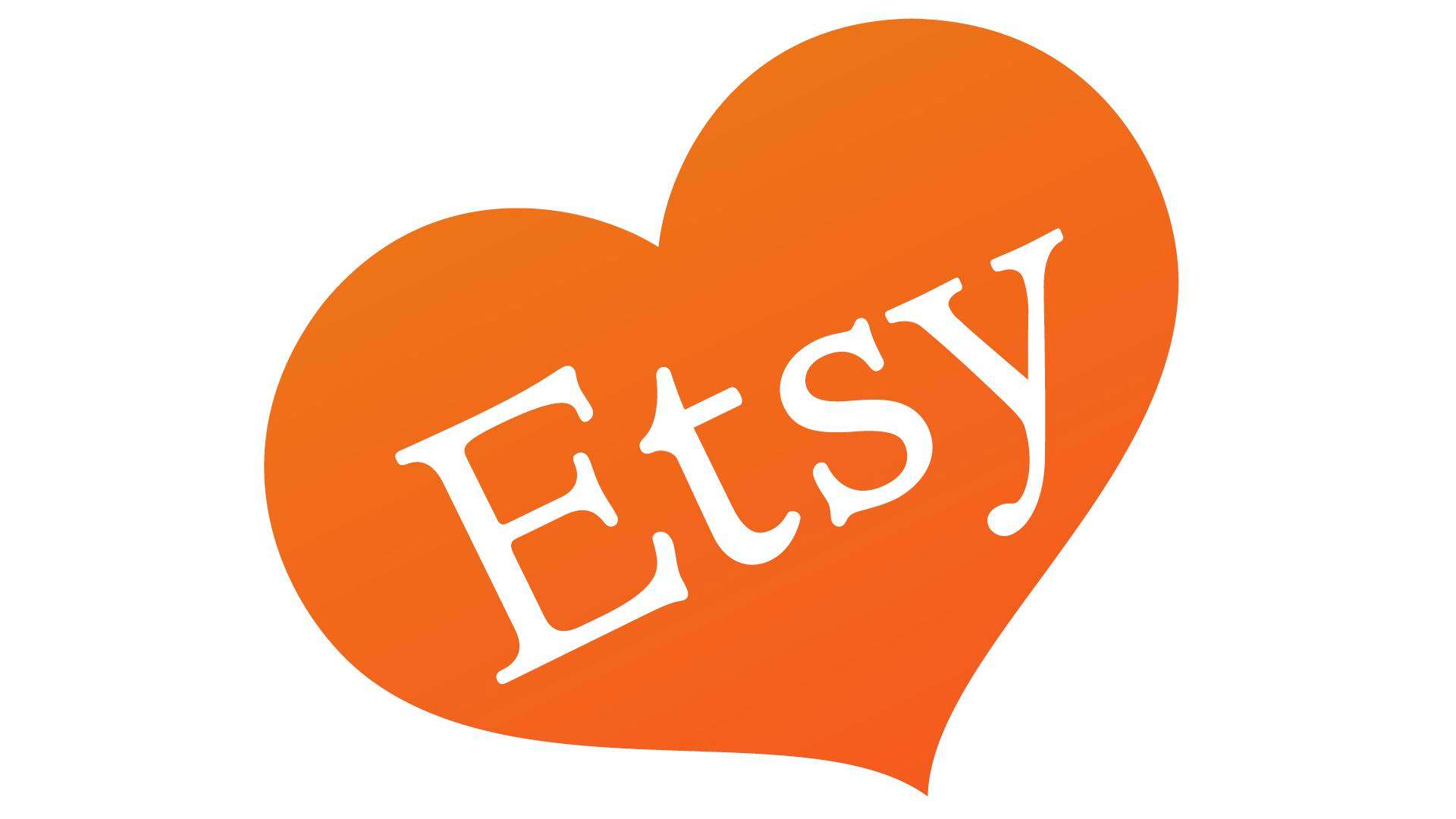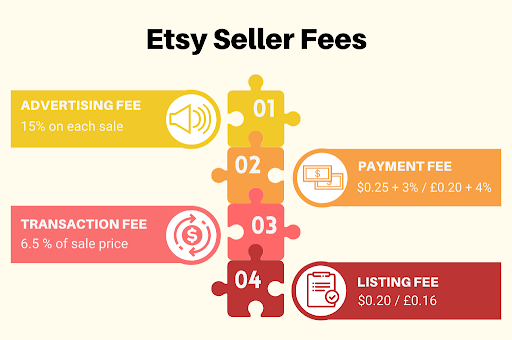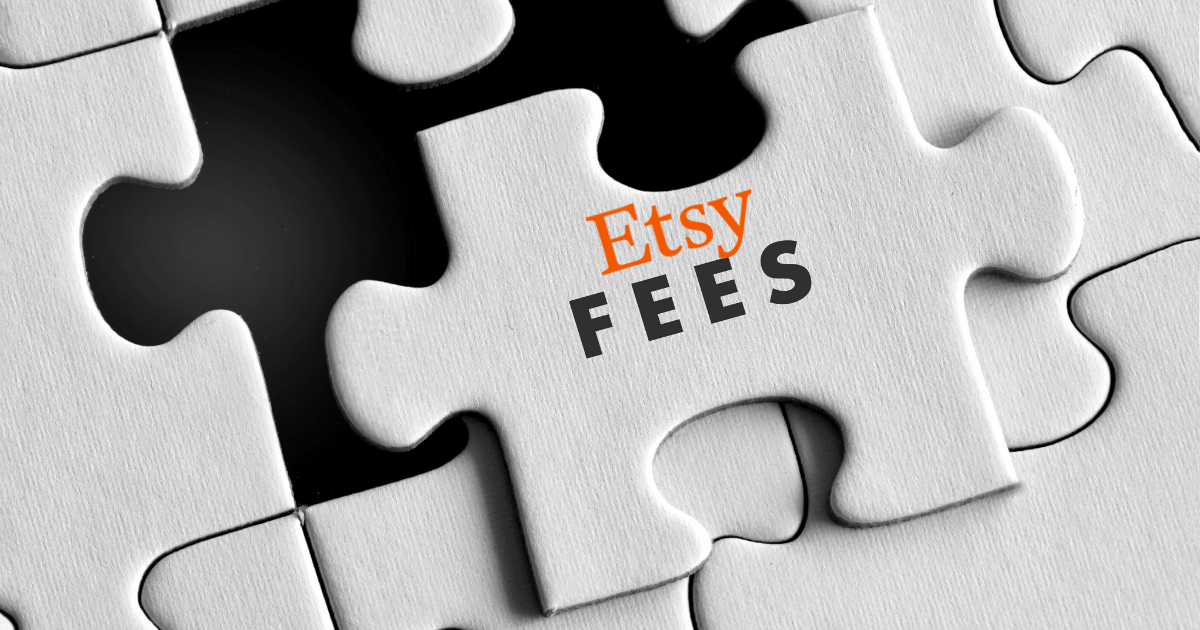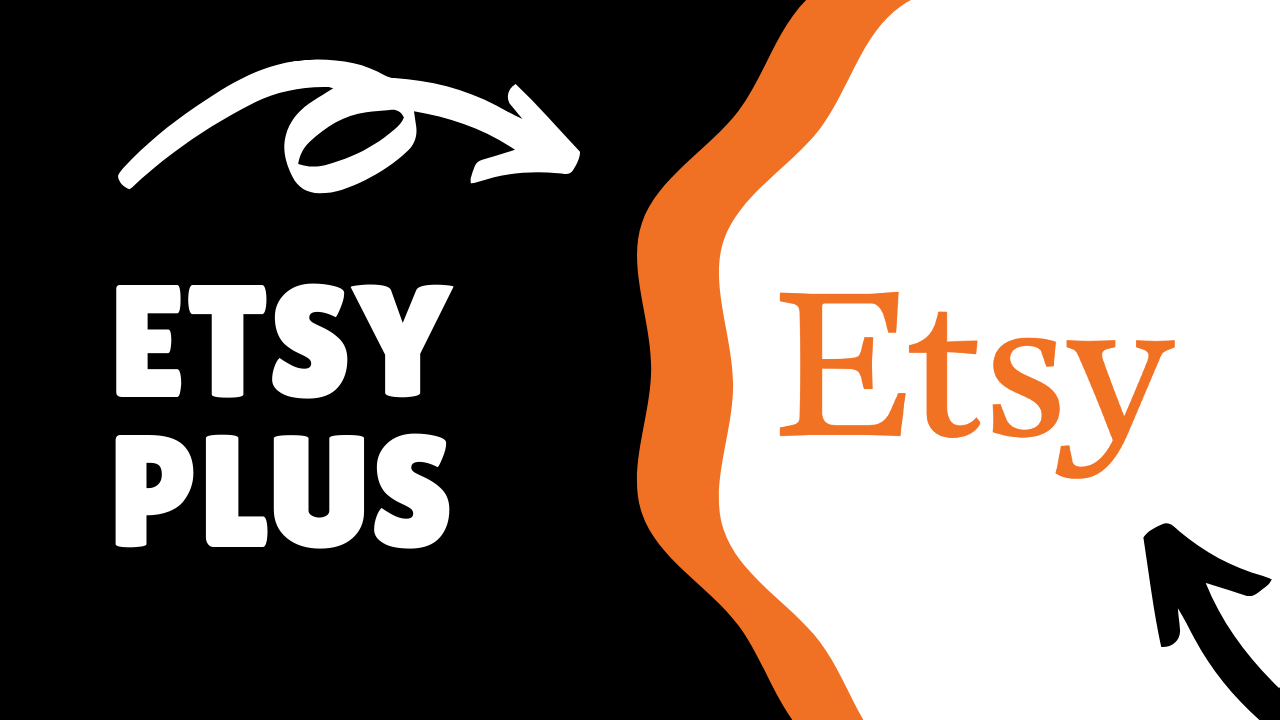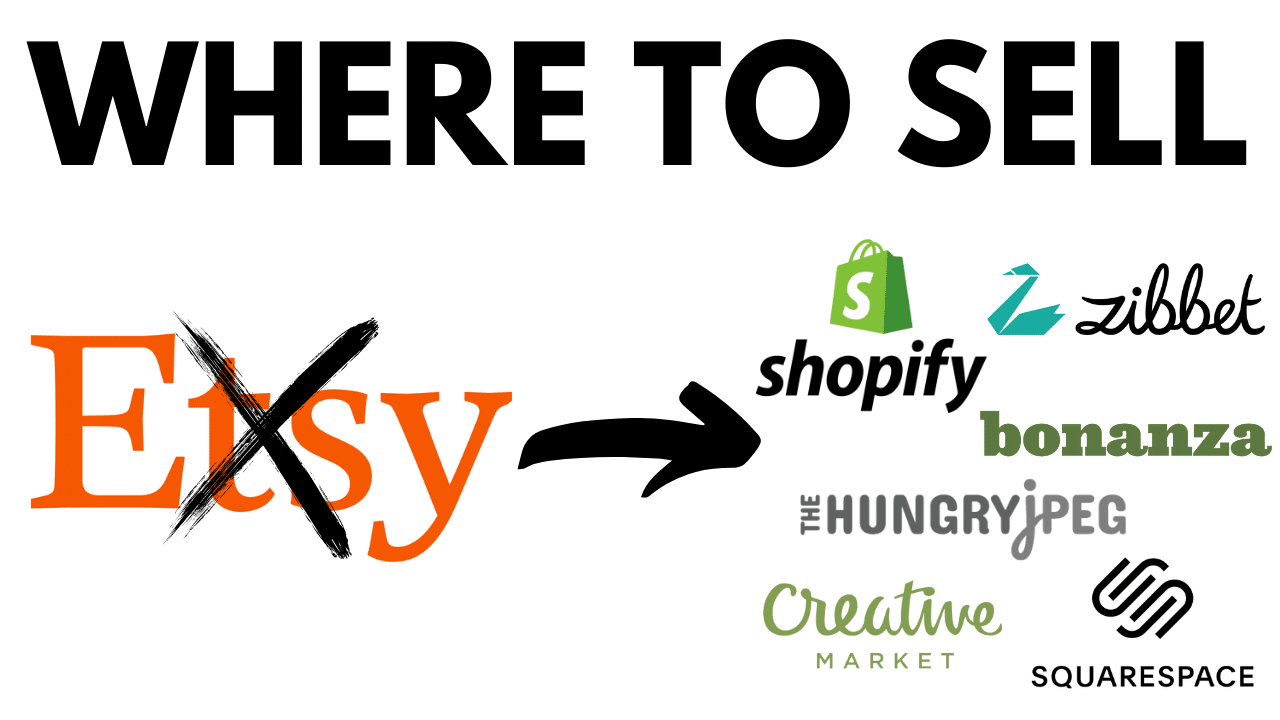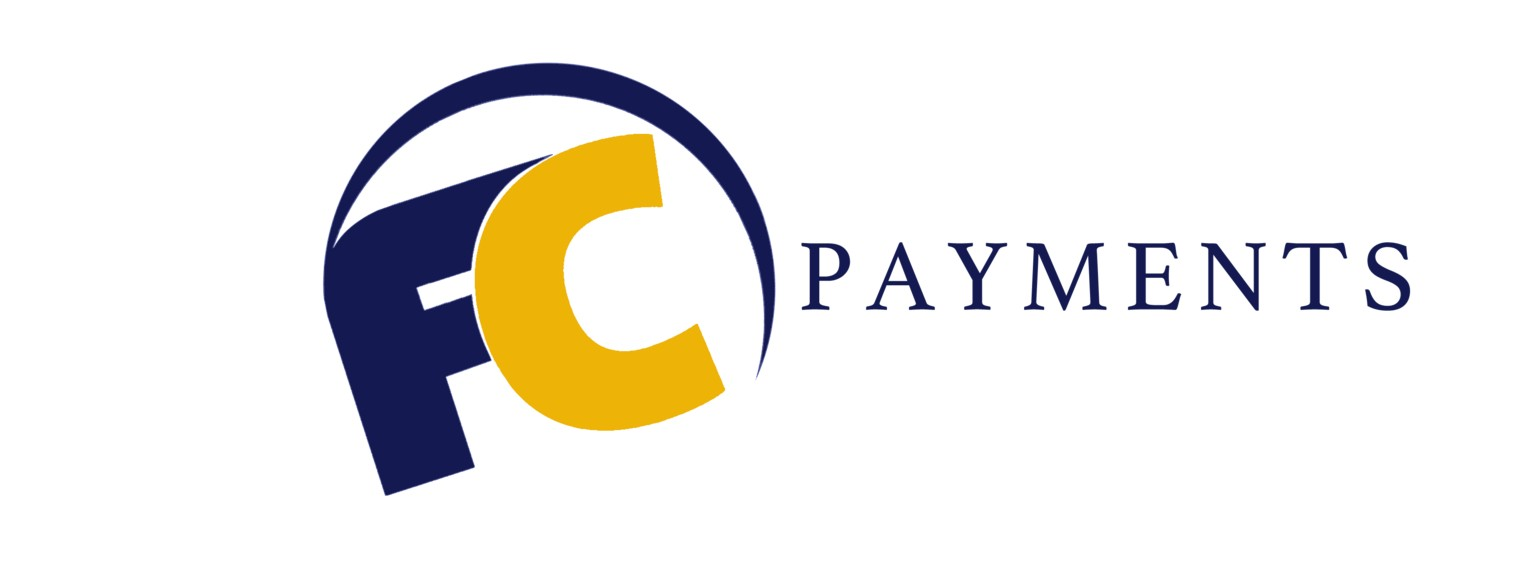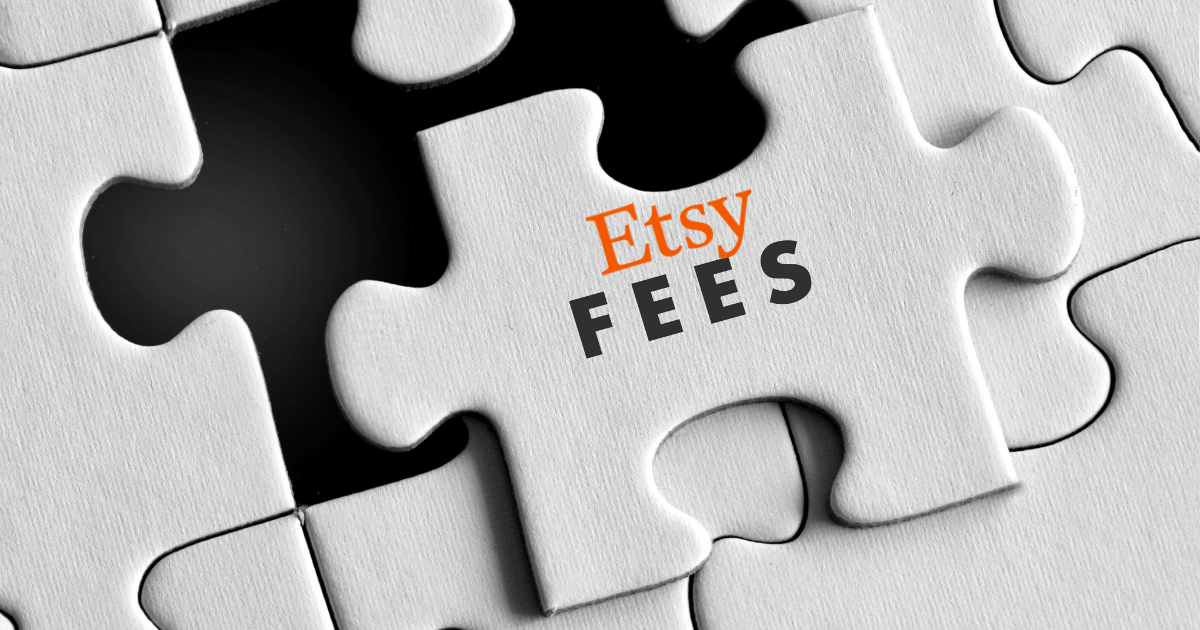
Etsy Fees: How Much Does It Cost to Sell on Etsy in 2024?
Etsy Fees: How Much Does It Cost to Sell on Etsy in 2024?
Are you an artist, crafter, or entrepreneur looking to sell your handmade products online? Etsy has been the go-to platform for many creative sellers, providing a bustling marketplace to showcase and sell unique items around the world. However, to make the most of this opportunity, it’s crucial to understand the various Etsy fees associated with selling on Etsy and how to manage them effectively to maximize profits. It doesn’t matter if you need a merchant account to sell jewelry on Etsy, or if you’re looking to make anything custom, the same rules apply.
Don’t worry, we’ve got you covered! In this comprehensive guide, we’ll break down the multiple Etsy fees you might encounter, share strategies to help minimize costs, and even explore alternative platforms for selling your handmade products.
Quick Summary
- Understanding Etsy Seller Fees is essential to optimize the profitability of one’s shop.
- Adopting a pricing strategy, shipping strategies, and advertising wisely can help offset fees while increasing profit margins.
- Alternatives such as Square Online, Shopify, and Redbubble offer various features for selling handmade products outside of Etsy.
Understanding Etsy Seller Fees
Selling on Etsy can be a lucrative endeavor, but it’s important to be aware of the mandatory fees associated with running an Etsy shop. These fees include:
- Listing fees
- Transaction fees
- Payment processing fees
- Advertising fees
By understanding these fees, you can better manage your expenses and optimize your shop’s profitability.
Listing Fees
One of the primary fees you’ll encounter as an Etsy seller is the Etsy listing fee. Etsy charges a flat fee of $0.20 per item listed, which is valid for four months and renews automatically upon each sale or after four months if the item remains unsold. This means that even if your item doesn’t sell, you’ll still be charged the listing fee.
To avoid paying multiple renewal fees, you can configure your listings to renew manually by selecting “Manual” instead of “Automatic” in the “Renewal Options” section of the Listings Manager.
Transaction Fees
Another key fee to consider is the transaction fee. Etsy charges a 6.5% transaction fee on the total sale price, which includes shipping, customization, and gift wrapping fees. The way this fee is applied can vary depending on the seller’s location and whether the cost of sales tax is included in the listing price. It’s essential to be aware of Etsy transaction fees when planning your pricing strategy.
It’s essential to factor in transaction fees when setting your prices, as they can impact your overall profit margin.
Payment Processing Fees
When using Etsy Payments, be prepared for payment processing fees. These fees are charged at 3% + $0.25 per transaction and may vary depending on the seller’s location. If you are familiar with dropshipping high risk merchant accounts, then you may also need to be aware of processing fees. Etsy Payments allows buyers to use a variety of payment methods such as:
- Major credit or debit cards
- Etsy Gift Cards
- Etsy Credits
- PayPal
- Apple Pay
- Google Pay
Understanding these fees is essential to ensure smooth transactions and maintain profitability. You should also understand merchant processing fees and rates! Feel free to visit our articles in the link to learn more about that.
Advertising Fees
Advertising on Etsy can be a powerful tool to drive traffic to your shop, but it’s important to be aware of the associated fees. Etsy offers two advertising options: Etsy Ads and Offsite Ads, with fees based on daily budgets or attributed orders. For example, Offsite Ads fees range between 12% and 15% of the total sale price depending on your shop’s annual sales, with a maximum fee of $100.
By choosing the most effective advertising options and setting appropriate budgets, you can make the most of your marketing efforts without incurring unnecessary costs.
Managing Etsy Fees
Now that we’ve covered the various fees associated with selling on Etsy, let’s dive into some strategies for effectively managing and minimizing these costs. By implementing a thoughtful pricing strategy, optimizing shipping methods, and advertising wisely, you can help ensure that your Etsy shop remains profitable while still offering competitive prices to your customers.
Pricing Strategy
One approach to offset Etsy fees and maintain a healthy profit margin is to increase your product prices. By factoring in the cost of materials, labor, and overhead, as well as the various Etsy fees, you can set prices that accurately reflect the value of your products and the costs associated with selling them.
Value-based pricing, cost-plus pricing, and competitive pricing are just a few of the strategies you can employ to achieve this goal.
You can lower your prices if you are able to lower your costs. Consider signing up with a merchant that offers lower credit card processing fees. If your credit card processor raised your rates, you also have recourse!
Shipping Strategies
To save on shipping costs and fees, consider implementing flat-rate shipping or bundling items together. Flat-rate shipping allows you to charge a single rate for all items or multiple items, potentially saving you money on shipping materials and fees.
Bundling items ordered by the same customer into one box can also help reduce shipping costs and fees. By offering cost-effective shipping options, you can make your products more attractive to buyers and mitigate the impact of Etsy fees on your bottom line.
Advertising Wisely
Finally, optimizing your listings and choosing the most effective advertising options can help you avoid unnecessary costs. To increase the visibility of your products, use relevant keywords, provide comprehensive descriptions, and include high-resolution images.
Additionally, research the different advertising options available, such as promoted listings, Google Shopping Ads, and Etsy Ads, to determine which are most suitable for your shop and budget. By advertising wisely, you can maximize your shop’s exposure without breaking the bank.
Region-Specific Fees and Taxes
Selling on Etsy can involve region-specific fees and taxes, depending on the location of your shop and customers. It’s important to be aware of these costs to ensure compliance with local regulations and avoid unexpected expenses.
In this section, we’ll explore currency conversion fees and VAT/sales tax requirements.
Currency Conversion Fee
If the currency of your listing is different from the payment account currency, Etsy charges a 2.5% currency conversion fee on the sale amount. To avoid this fee, consider listing your items in the same currency as your payment account.
This can help simplify your financial management and reduce the costs associated with selling on Etsy.
VAT and Sales Tax
Etsy charges VAT and sales tax fees in eligible countries and territories, with Etsy sellers responsible for collecting and paying taxes. Etsy collects and remits sales tax to the government authorities each month in most US territories. This helps ensure relevant taxes are paid on time.
If you are unsure of state or regional taxes applicable to you, please get in touch with your local tax office. They will be able to provide you with the required information. Being aware of these requirements and managing them appropriately can help you avoid potential legal issues and financial penalties.
Optional Etsy Services and Their Fees
In addition to the mandatory fees for selling on Etsy, there are also optional services available that can help you enhance your shop and reach a wider audience. These services include the Etsy Plus subscription, Pattern, and shipping label fees.
While these services are not required, they can offer valuable benefits for sellers looking to grow their businesses.
Etsy Plus Subscription
Etsy Plus is a $10/month subscription plan that provides additional features and benefits for sellers, including:
- Advanced shop customization options
- Restock requests for sold-out items
- Discounts on domain customization, packaging, and promotional materials
- 15 listing credits and $5 in Etsy Ad credits each month
If you’re looking to take your Etsy shop to the next level, the Etsy Plus subscription might be a worthwhile investment.
Pattern Fee
For sellers seeking increased exposure, Etsy offers a tool called Pattern that creates a separate website for your shop. Pattern costs $15/month and allows you to showcase your products on a fully customizable site, separate from the main Etsy marketplace.
While Pattern is not necessary for all sellers, it can be a valuable tool for those looking to expand their online presence and reach a larger audience.
Shipping Label Fees
Etsy offers shipping label services, with fees based on package details and location. By purchasing shipping labels through Etsy, you can save time and streamline your shipping process. Additionally, Etsy offers discounts for USPS shipping, which can help you save even more on shipping costs.
While not required, using Etsy’s shipping label services can make it easier to manage your shop’s logistics.
Alternatives to Selling on Etsy
While Etsy is a popular platform for selling handmade products, it’s not the only option available. If you’re interested in exploring alternatives to sell on Etsy, consider platforms like Square Online, Shopify, and Redbubble. Each of these platforms offers unique features and benefits that may better suit your business needs.
Square Online
Square Online is a free online store builder that allows you to:
- Create a fully customizable eCommerce site without any upfront costs
- Design your website
- Accept payments
- Manage order history
- Enable customers to book appointments.
The only fees associated with Square Online are payment processing fees, making it an affordable option for sellers looking to set up their own online store.
Shopify
Shopify is another popular online store builder that offers a range of monthly subscription plans and lower payment processing fees than Etsy. With Shopify, you can:
- Customize your website
- Sell products
- Accept payments
- Manage inventory with ease.
If you’re looking for a more comprehensive eCommerce solution with a lower fee structure, Shopify may be an attractive alternative to Etsy.
Redbubble
Redbubble is a print-on-demand marketplace where sellers can upload their designs and earn a percentage of sales without any upfront investments. Redbubble handles all aspects of production, shipping, and customer service, allowing you to focus on creating unique designs and marketing your products.
If you’re an artist or designer seeking a low-risk way to monetize your creations, Redbubble might be the perfect platform for you.
First Card Payments
If you’re looking for a payment processing solution that offers competitive rates and seamless integration with various eCommerce platforms, consider First Card Payments. Here are some reasons why:
- They are a full-service high-risk merchant account provider
- They specialize in offering solutions for businesses that may have bad credit
- They provide a 25% discount on fees
- They can approve your account within 24-48 hours
By choosing a payment processing solution that fits your business needs, you can ensure smooth transactions and maximize your profits.
Full Summary
Understanding and managing Etsy fees is crucial to running a successful shop and maximizing your profits. By implementing effective pricing, shipping, and advertising strategies, you can minimize the impact of these fees on your bottom line. Additionally, exploring alternative platforms and payment processing solutions can help you find the best fit for your unique business needs. Armed with this knowledge, you’ll be better prepared to navigate the world of Etsy selling and make the most of your creative talents.
Frequently Asked Questions
How much fees does Etsy take?
Etsy collects a 6.5% transaction fee in addition to $0.20 from every sale made in your store.
This fee applies to the total cost of the item, shipping and gift wrapping if applicable.
What percentage does Etsy take 2023?
Etsy will take a 6.5% transaction fee from each of your sales made in 2023.
How do I avoid seller fees on Etsy?
To avoid seller fees on Etsy, consider relisting existing products instead of creating new ones each time. Avoiding fees is prohibited by Etsy and will get your shop shut down.
The best way to lower fees is to reduce or consolidate the services you use through Etsy, such as opting for an Etsy Pattern or Plus subscription.
Why are Etsy selling fees so high?
Etsy charges sellers fees to cover website hosting, maintenance and growth, marketing, customer service, and the costs associated with transactions, payments, and transferring funds, resulting in high selling fees for users.
These fees are necessary to keep the platform running and to ensure that sellers have access to the tools and services they need to succeed. However, the high fees can be a burden for some sellers, making it difficult to turn a profit.
How can I minimize the impact of Etsy fees on my profits?
To minimize the impact of Etsy fees on profits, implement effective pricing, shipping, and advertising strategies.
Pricing should be set to maximize profits while still being competitive. Shipping costs should be kept as low as possible, and advertising should be targeted to reach the right audience.
My interest in the financial world started to blossom in High School. However, my parents tell me I use to watch financial programs before the age of 5. So, I guess I was born with the Financial bug. In high school I was accepted into their Finance Academy, which I attended for 4 years. In addition to graduating high school, I accumulated a substantial amount of financial knowledge few people experience at such a young age. During which time, I won the State of Florida Stock Market Contest and I also finished in the top 100 in the CNBC stock market contest which had over 1 million participants throughout the country (including some of Wall Street’s elites) with a take home prize of $1 million. These achievements allowed me to be invited to many shows and events with top people in their fields of business from around the world.
No Comments
Sorry, the comment form is closed at this time.


